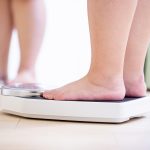
Women are far more likely to suffer an early death if they develop depression during or after pregnancy, a new Swedish study has found. Women who developed what’s known as “perinatal” depression were generally twice as likely to die as women who didn’t experience the mood disorder, researchers reported Jan. 10 in the BMJ. They also are six times more likely to commit suicide than women without this form of depression, researchers found. The death risk tied to pregnancy-related depression peaks in the month after a woman is diagnosed with the disorder, but it can remain elevated nearly two decades later, results show. “I believe that our study clearly shows that these women have an elevated mortality risk, and that this is an extremely important issue,” said study co-author Qing Shen, an affiliated researcher at the Karolinska Institute. Perinatal depression is fairly common, affecting 10% to 20% of all pregnant women, the researchers said in background notes. For the study, researchers analyzed data on more than 86,500 Swedish women diagnosed with perinatal depression, which can occur either during pregnancy or up to a year following childbirth. Six to eight weeks after childbirth, all Swedish women are asked to complete a screening tool used to detect signs of depression. The research team compared those females to more than 865,000 women of the same age who had… read on > read on >


















